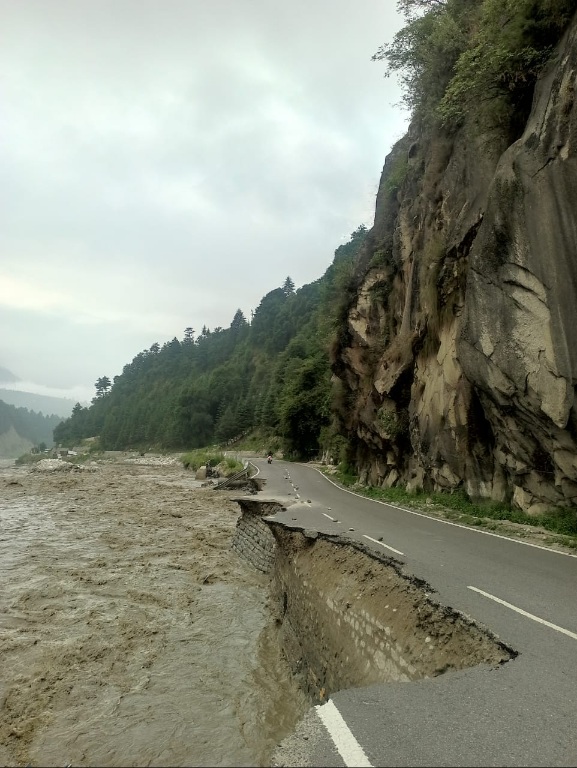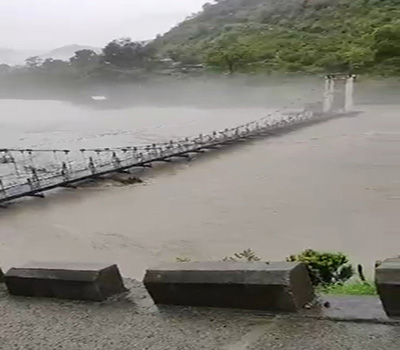Shimla/Dehradun/Leh: In the absence of the scientific study on health and ecology of our rivers that come from Himalaya, or for that matter from Eastern and Western Ghats and from Vindhyachal, we are clueless as to what is happening to our rivers over a period of 100 to 200 years or so.
On International Rivers Day, as environmentalists and concerned citizens gather to reflect, the harsh reality of India’s rivers stares us in the face.
But alas, only just as an annual ritual!
What to talk about the aquatic life, at a time when the mining mafias have plundered river wealth, we struggle to find a water-weathered boulder in the rivers, in their tributaries, and in khads, one can but only imagine as to what awaits our rivers- holy or not so holy- in India as a whole.
Dr. Rajan Kotru, a renowned environmentalist, and an expert at Integrated Mountain Initiative (IMI), a civil society group of Himalayan states, from Palampur, Himachal Pradesh, warns that India’s rivers, the lifeblood of our nation, are in grave danger.

These rivers, emerging from the mighty Himalayas, are not just water sources but cultural and ecological legacies.
"However, India has failed to act as a responsible custodian of this priceless heritage", he laments in a video on social media.
The rivers like the Brahmaputra, Ganga, Satluj, Beas, the Yamuna and countless others have shaped the socio-economic and cultural fabric of India.

Yet, despite their vital role in our development, we have severely neglected their health.
He notes that issues like solid waste, pesticide runoff from agriculture and horticulture, and untreated urban sewage have turned our rivers into toxic streams.
As climate change accelerates glacier melt, the water systems that feed millions of people are rapidly deteriorating. Without immediate action, Kotru warns, we may soon have water in abundance—but it will be too polluted to drink.
#Rivers Choked by Development and Neglect
The Himalayan rivers, such as the Satluj, Beas, Ravi, and Chenab, are now battling the onslaught of silt and debris carried by floods and exacerbated by rampant deforestation, unchecked construction of dams, and road projects that carve through fragile mountain ecosystems.
In regions like Lahaul-Spiti, Kinnaur, Kullu, Mandi, Kangra, and Shimla, the increasing siltation and pollution threaten the survival of the rivers like, Chenab, Beas, Satluj, Pabbar and pothers, pushing them toward ecological collapse.

The Himalayan glaciers, the primary source of these rivers, are retreating faster than ever due to global warming.
As glaciers melt, new ecosystems are forming in their place, fundamentally altering the landscape.
A recent global study on fore-plains of glaciers paints a worrisome picture for the future of mountain rivers, including those in the Himalayas.
While the Indian government has launched projects like Namami Gange, aimed at rejuvenating rivers, ecologists lament that many of these initiatives have yet to deliver meaningful results.
With the exception of Namami Ganga, other river revitalization projects like Namami Indus and Namami Brahmaputra remain largely slogans, leaving India’s rivers to languish.
#Political Apathy: Rivers Paying the Price
Himalayan state governments have been alarmingly passive in addressing the river crisis.
As roads, dams, and other infrastructure projects creep deeper into fragile mountain territories, little is being done to mitigate the damage.
Fragile ecosystems, especially in border areas like Siachen, Spiti, and Kedarnath, are being compromised in the name of development.
Urban centers across the Himalayas, from Shimla to downstream cities, dump their untreated sewage and garbage directly into rivers.
This pollution is killing the rivers, turning them into stagnant, poisonous channels instead of the vibrant arteries of life they once were.

The unchecked flow of pollutants into rivers is not only an environmental disaster but a ticking time bomb for future water security.
If we go be the present trend, one can predict that within a decade, clean drinking water could become an elusive dream, triggering social unrest and even conflict.
The Rivers of Tomorrow: Silent, Polluted, and Lifeless?
Kotru’s stark warning is a wake-up call: rivers are not just waterways but living entities, essential to the survival of civilizations.
Rivers have disappeared from the pages of history before—think of the Saraswati, which vanished due to natural and man-made disasters.
If we do not act now, India's rivers may face a similar fate.
With rising urban populations and worsening pollution, India may well find itself in the midst of a global water crisis, where wars will be fought over access to clean drinking water.
The experts high light that other mountain regions in the Western and Eastern Ghats, Nilgiris, and central and southern India are also bleeding.
Kerala's recent floods, for example, revealed how deforestation and encroachments have wrecked havoc on the state’s river systems, rendering their waters unsafe for human use.
The Way Forward: Action, Accountability, and Policy
The experts advocate for a comprehensive mountain policy that prioritizes river basin planning, involving both upstream and downstream management.
They call for immediate action to reduce solid waste, promote organic agriculture, and intensively monitor river health.
Without these measures, India’s rivers will continue to degrade, ultimately choking the very life they provide.
On this International Rivers Day, let it be known: our rivers are in crisis.
The debris from roads, dams, and construction cannot be allowed to flow unchecked into our rivers any longer.
It’s time for every stakeholder—from governments and NGOs to local communities—to take responsibility for protecting our rivers.
These waterways are not just the veins of our nation, they are the melody of nature.

But if they remain blocked by pollutants, illegal dumping, and neglect, they will die a natural death, leaving behind a silent, lifeless landscape around us.
Rivers are more than just water—they are the pulsating arteries and the soul of India.
The governments of the day both in New Delhi and in the Himalayan states, must do scientific studies to know where our rivers stand.
Let this day be a rallying cry for their protection, before it’s too late.
#InternationalRiversDay #NamamiGange #NamamiIndus
#www.himbumail.com
#IMI







